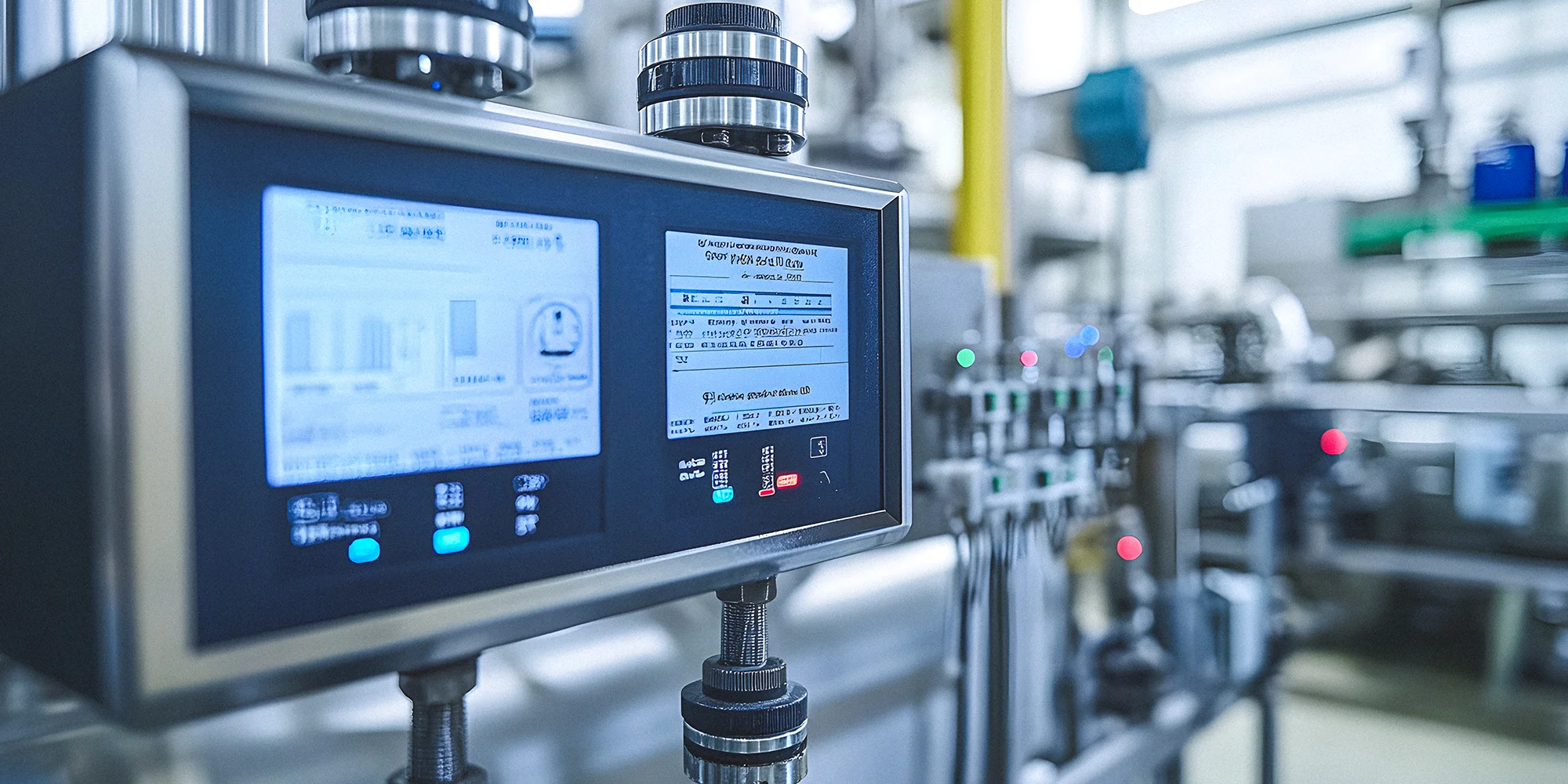Embedded smart systems have the potential to transform the industrial world. Should industrial instrumentation and machine manufacturers be leading the charge and making embedded machine learning at the Edge available to all the industries they serve?
There has been a lot written and discussed over the past five years about the expected growth in digital services through connected instruments in industrial applications.
Terms such as IIoT (Industrial Internet of Things), Industry 4.0 and the concepts around deployment of Artificial Intelligence (AI), Machine Learning (ML) and Digital Twins are well established within the industrial world.
Additionally, the desire from industry to adopt IIoT solutions appears to be strong, and the market attractiveness for instrumentation and machine manufacturers to deliver these solutions equally so.
Indeed, according to recently published studies by Deloitte, 83% of manufacturing businesses surveyed believe smart factory solutions will have a transformative effect on manufacturing in the next 5 years. Other studies also report that close to 50% of manufacturers surveyed are already deploying IoT sensors and devices in the production process.
However, the question remains whether large-scale deployment of these tools can be achieved across certain industrial applications, even where the requirement and benefit of sensor derived data is already well established. Issues such as data security, the cost of managing big data and the onus on plant operators to build the IT infrastructure to access these tools remain a restriction in some of the largest industrial sectors.
The advancement in embedded device technology is enabling data management and processing to be brought even closer to the sensors capturing this data. Instrumentation and industrial machine manufacturers, who increasingly consider themselves ‘full solution providers,’ now have the opportunity to embed IoT capabilities directly into their products, removing many of today’s barriers to implementation and helping industry to unlock the benefits of IoT.
What value does embedded machine learning at the Edge bring to industry?
The continuous development of enhanced sensing techniques is providing opportunities for plant operators to understand and automate processes in ways not previously possible without manual analysis or trial and error approaches. Advances in optical and electrochemical sensing techniques alongside the improved price, performance and accessibility of vision and imaging systems has created opportunities for large real-time datasets to help inform and manage process efficiency.
Increasingly, machine learning (ML) is seen as a powerful tool to create actionable insights from this data. The availability of open-source algorithms supporting machine learning (ML) techniques gives the ability to solution providers and plant operators to develop enhanced process control, analytics, and automation tools, tailoring these tools to specific applications, and in some cases specific industrial plants.
In terms of the sensors and plant machinery, monitoring onboard self-diagnostics is commonplace but often these diagnostics alert only once a problem has occurred. By deploying ML techniques to study sensor on-board performance data, users can extrapolate forward over time. Additionally, advances in anomaly detection algorithms allow for multiple sensors to be monitored simultaneously to detect unusual readings in real-time.
Predicting when a fault could occur allows for effective predictive maintenance, enhances asset management, and avoids unplanned downtime.
However, in some industries wide-scale adoption of these solutions remains low preventing the long-promised large-scale deployment of ML and other smart system developments.
So how does Edge computing provide a specific solution?
AWS (Amazon Web Services) define edge computing as “the process of bringing information storage and computing abilities closer to the devices that produce that information and the users who consume it.”
With the rapidly growing development of the AI chip market, this capability is being brought even closer to the devices enabling onboard edge computing within the instruments themselves.
Additionally, advances in the techniques used to embed deep learning capabilities in devices are allowing for lighter weight models to be developed making them much more suitable for resource constrained edge computing solutions.
In industrial applications, this approach has many advantages specifically in the deployment of Machine Learning capabilities.
Industry concerns with cyber security
Despite the likes of AWS and Azure boasting impressive security credentials for their hosted services, many industrial multinational corporations will not allow any data to leave site due to concerns with both the security of the data and the potential for bad actors using cloud communication devices to access internal networks.
This is particularly prevalent within utilities companies such as wastewater & power generation and in the defence & security sectors where restrictions include only the use of approved electronic devices on site with security measures in place to prevent any data leaving the confines of their onsite Local Area Networks.
An edge computing solution embedded within devices addresses this issue by providing users with the data analytics and added value functionality of IoT solutions whilst meeting the customers’ cyber security requirements. Whilst on-site security protocols must remain robust, solution providers who are able to provide a closed loop system using embedded devices will have a distinct advantage over the competition in addressing industries with the most stringent cyber security policies.

Challenges of managing big data
ML algorithms work best when access to larger data sets is available. Managing these large sets of often raw sensor data can be both costly and be limited by performance of local network speeds and area network infrastructure needed to process and store real-time data.
There is also an implied cost for data storage with cloud services which varies depending on the hosting service used and how much data needs to be stored. Costs can also be applied depending on the executable requests for data being pulled from the cloud storage repositories, analytical queries run from the database and chargeable rates dependant on the type of cloud storage used (long term vs. short term storage).
Additionally, the requirement to provide the IT infrastructure needed falls to the companies wanting to deploy these solutions on to their site, whether that is allocation of on-site data storage or establishing the hardware requirements to transmit and receive data in and out of the cloud.
These variables make it difficult to assess the operational cost of managing storage and processing of this valuable sensor data. With the best results from Machine Learning derived from interrogating large datasets, it is not often easy for users or providers to estimate costs and anticipate the return on investment deploying these solutions can provide.
An embedded edge approach enables solution providers to offer customers options for either on site or cloud storage of the data. By managing the processing of data within the product itself, this also enables options to more precisely define what data to retain and what to discard, dramatically reducing the amount of data being stored and therefore the implied costs whether stored physically or virtually.
Depending on the application, deep learning algorithms could be trained to self-identify what to retain and what to discard allowing data storage and management to be automatically optimised at a specific device level over time.
Connectivity and responsiveness
For those of us living or working in rural or more remote locations, losing mobile phone signal is common but mostly a temporary inconvenience. However, for critical systems supporting up-time of industrial processes with revenue into the millions-per day at stake, it is not surprising that concerns with both connectivity and responsiveness of cloud-based and local area network systems would be a factor affecting adoption of ML supported systems.
Due to the security concerns around third-party systems connected into a site internal network, 4/5G connectivity is commonly used instead. However, this can create a latency in data transmission preventing instantaneous response to real time events. This latency is often increased when transmitting large scale raw sensor data or where post-processing of this data is required to trigger an action.
The inability to offer truly real-time data management solutions, with subsequent process control benefits, is a limiting factor in some industrial applications where rapid and dynamic control of systems data is a must. With the quality of mobile data connection variable depending on location and the inherent latency of sending and receiving large data sets over an existing IT infrastructure adoption of IoT solutions in some applications may continue to be restricted.
Embedded edge solutions have a clear role to play in addressing this issue, either as the sole method of data capture or alternatively as a redundancy to a primarily cloud-based solution, ensuring contingency against poor connectivity or downtime from the service providers. The improved responsiveness of processing data at source also opens up opportunities where instant and dynamic control is required.
Instrumentation and machine manufacturers building IoT solutions into their products can address concerns from users about the impacts of poor connectivity and reduce the requirement on customers to build on-site IT infrastructure to access the benefits they provide.
Existing PLC systems and integration challenges
And finally, for those of us who have worked extensively across industrial applications, from ‘feedstock to final emission,’ there are very few if any manufacturers that offer the full range of sensing and analytical instruments used across a complete industrial process. However, the insights that can be gained by combined data from various stages of a process are potentially significant.
Today, many solution providers offer data analytics and data management tools through discrete software packages either locally or increasingly through cloud-based services. This limits the appeal to users who often want all relevant data from across their process centralised into existing data management systems (e.g. PLC, SCADA etc).
Using a discrete software tool for a small number of their overall network of sensors has obvious downsides for the plant operators. The alternative is to provide sites with the raw data from the sensor systems, but this often prevents access to the insightful analytical capabilities from the solution provider’s software tools.
Employing an embedded edge solution, coupled with increasingly lighter weight deep learning models, opens the opportunity for instrument and machine manufactures to offer their valuable analytical tools directly from the sensors themselves. This allows users to capture all the various sources of data across site with additional features and benefits inbuilt.
Equally, ML algorithms and analysis can be performed before sending the analysed results to the onsite data management system or cloud-based repository. This ensures the most efficient use of this data and provides a potential platform from which further tools, such as AI, can be established as, over time, insightful data across the whole industrial process is established and used to deliver the long-promised benefits of IIoT & Industry 4.0.
What’s next for embedded machine learning at the Edge?
The recently reported rise of companies such as Nvidia, a leading chipmaker whose devices provide a platform on which machine leading applications can be embedded, is one indicator of the rate at which demand for embedded ML at the edge is growing.
The expectation from industry to utilise tools, such as machine learning, to transform industrial processes requires instrumentation and plant machinery manufacturers to begin building in these capabilities with both new and existing products.
The requirement to manage big data and the limitations of cloud-based storage and analytics requires edge computing solutions to be an accessible option to users to make Machine Learning a viable proposition for the widest range of applications.
Indeed, companies such as Analog Devices, a leading high-performance semiconductor supplier, have predicted that by 2025 over 50% of data generated will be ‘at the edge’.
Utilising embedded edge solutions to access the widest range of applications enables the data gathering needed to develop further AI tools of the future and may accelerate the adoption of wider digitalisation within industry.
By addressing these issues, embedded machine learning at the Edge can help unlock IoT deployment into industry as well as create the platform on which further automation, digitisation and smart systems are built.

